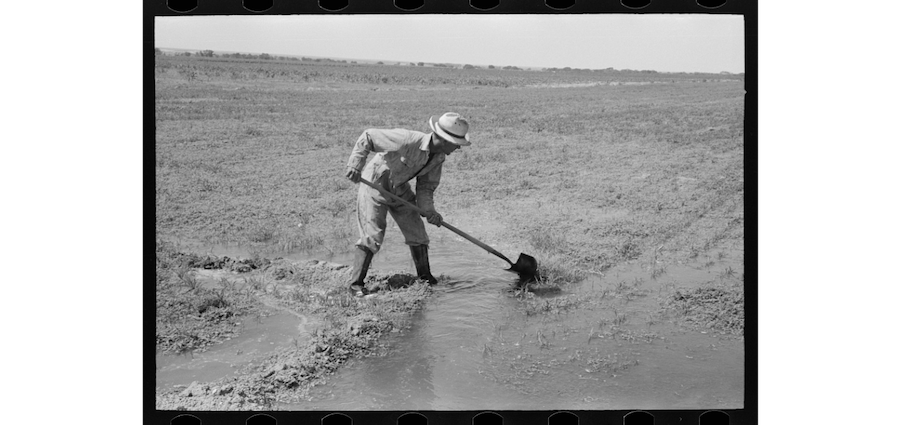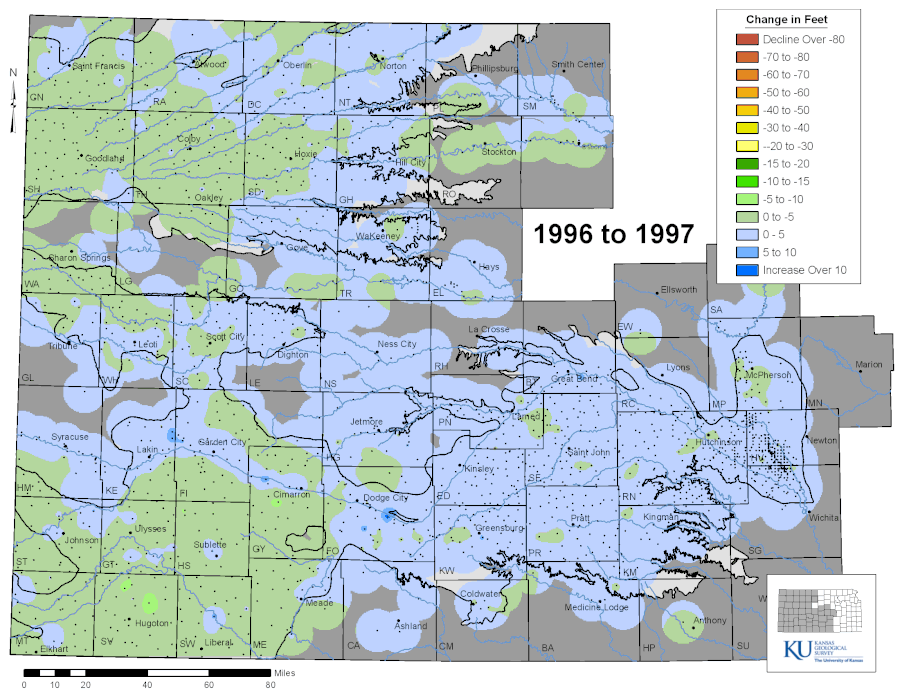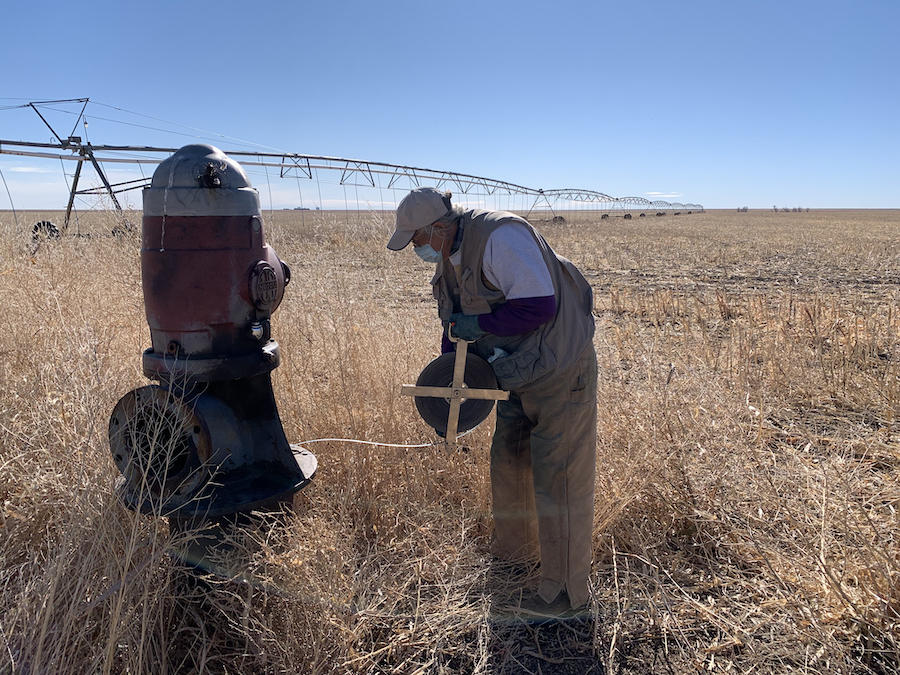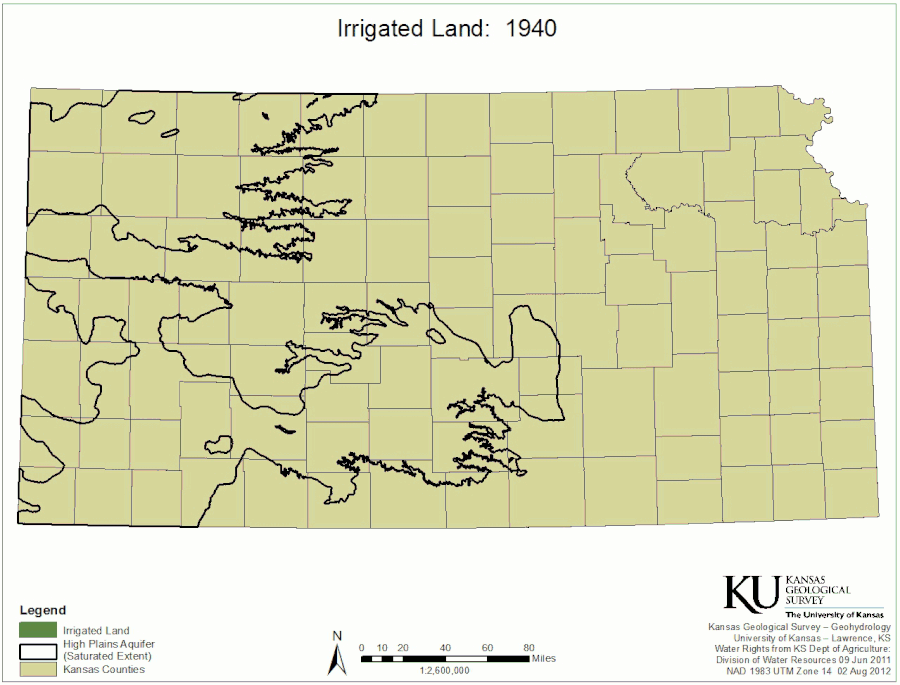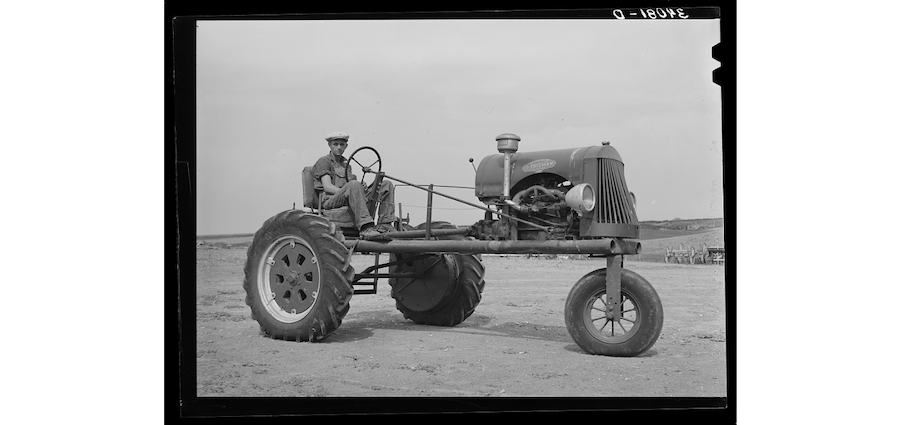By DAVID CONDOS
HAYS, Kansas — A few years ago, Stuart Beckman drove 65 miles with a neighbor to attend a wedding in Saint Francis in the northwest corner of Kansas.
The two farmers weren’t particularly welcome.
“They found out where we were from,” Beckman said, “and they just about ran us out of there.”
Not surprisingly for this part of the High Plains, the trouble started over water.
“We’re these dumb (farmers) that are thinking we can get by with an acre-foot of water and that’s crazy,” Beckman said, recalling the reception he and his neighbor got in Saint Francis. “‘You guys ought to go back home.’”
Beckman farms two counties away. And there, folks had formed the state’s first local enhanced management area, or LEMA — a 99-square-mile patch of northwest Kansas prairie where farmers set strict limits on the amount of water they can use for irrigation. It’s that idea — that a farm operation would no longer have the freedom to use as much water as it can pump from the ground — that soured the wedding.
The LEMA’s irrigation restrictions represent a last-ditch effort to save the region’s most critical water source: the Ogallala Aquifer. And in a place where agriculture is king and rainfall is scarce, the path to any kind of curb on irrigation took more than 100 years.
Clear gold
High Plains homesteaders settled on land so dry it was essentially a desert. Western Kansas gets about half as much precipitation as the eastern side of the state. So, farmers needed a way to water their crops.
The solution was beneath their feet. The Ogallala is North America’s largest aquifer, a layer of sand and gravel saturated with water that stretches more than 175,000 square miles under eight states.
As the region recovered from the Dust Bowl era, farmers used new technologies like pumps powered by car engines to tap into the aquifer like never before. At first, wells were used largely for flood irrigation, where water flows directly into the fields. It wasn’t very efficient — flood irrigation wastes about half of its supply to evaporation and runoff — but it worked.
The Ogallala helped transform western Kansas from an agricultural wasteland into America’s breadbasket. But after generations of being tapped to irrigate the High Plains, parts of it are beginning to run dry.
Roughly a third of the water under Kansas has disappeared. In parts of southwest Kansas, more than half of the aquifer’s supply is already gone.
Consider the stakes. Kansas grain harvests fuel the state’s feedlots, where 2.5 million cattle consume more than 6.5 billion pounds of corn a year. Those feedlots drive the meatpacking industry that sustains the largest cities in western Kansas.
It all adds up to billions of dollars for the state’s economy. And that’s on top of the drinking water the aquifer provides for hundreds of thousands of Kansans from Goodland to Wichita.
“Water’s critical to this state,” said Rex Buchanan, director emeritus of the Kansas Geological Survey. “Depletion of the Ogallala is probably the most important natural resource issue facing Kansas.”
Precision agriculture
Irrigation technology has come a long way over the past century. Where farmers used to guess how much water their fields needed, they can now plant remote probes in the soil to measure real-time ground moisture. They can use electromagnetic sleds to map the unique characteristics of each section of soil and monitor thousands of acres of customized irrigation from their phones.
Today’s precision agriculture technology allows farmers to pinpoint exactly where water is needed and where irrigation is delivered. It’s already helping re-tool the giant center pivot sprinklers that shower the plains.
Every incremental step toward even greater water efficiency in farming has the potential for a monumental impact. That’s because the center pivots on Kansas farms use much more water than the sinks and toilets in Kansas towns.
“If you go and actually add up the math on how many flushes you’d have to save to equal what one inch of water on a pivot is,” said Weston McCary, who teaches precision agriculture at Northwest Kansas Technical College, “it’s obscene.”
If the average farmer in Sheridan County cut water use by one inch across 1,610 acres of irrigated cropland, it would save over 43 million gallons.
But getting farmers to take that leap can be a challenge.
“Throughout the whole history of agriculture is the mindset, ‘OK, I’m doing it this way, this is what I know works.’” said Shannon Kenyon, an environmental scientist who oversees the northwest Kansas groundwater management district. “So when you start talking about change, that becomes a very scary concept.”
So the district hopes to tempt farmers with $1,000 incentives for trying out new technology and with evidence that other people like them have made more money by pumping up less water.
Culture shift
The Sheridan County LEMA forced farmers to cut irrigation by 20%. But the results showed that farmers ended up decreasing their water use by 31%.
“It seems really encouraging,” said Jillian Deines, a Stanford researcher who led the Michigan State University study on the LEMA, “because it seems like the program has both increased profits and increased water savings.”
The study found that, yes, less irrigation meant slightly smaller harvests. But the money farmers saved on their energy bills by pumping less water was four times more than the amount of money they lost due to decreased production.
“Instead of bragging about bushels per acre,” said Kenyon of the northwest Kansas water district, “they’re talking about how many bushels per inch of water that they got.”
Brett Oelke is one of those farmers. His 9,000 acres in Sheridan County present a telling case study on the program’s financial impact because he farms land on both sides of the LEMA’s boundary line.
“We realized that, ‘Hey, we’re making more money inside the LEMA,” said Oelke, who has since cut his water use even on parts of his farm that fall outside the districts’ strict limits. “I just wish we would have done it 20 years earlier.”
More importantly, Oelke has seen a dramatic change in how his neighbors think and talk about water. Sharing how much, or how little, water they’ve used on their farms has become part of everyday conversation.
“Prior to that,” said Oelke, “nobody knew how much water they pump, ever.”
Many farmers, including Oelke, have found ways to convert a majority of their property to dryland farming, which uses soil moisture conservation to grow crops with no irrigation at all. Others have swapped hydration-heavy crops like corn for ones that require less water, such as cotton and sorghum.
But making the shift toward a water conservation mindset hasn’t always been smooth. When the northwest Kansas water district moved to expand irrigation limits to a broader area, it faced a lawsuit from dozens of farmers who said it infringed on their water rights. The limits held up in court and now cover parts of 10 counties.
Beckman, that farmer who nearly got run out of a wedding for backing irrigation rules, still hears from other farmers in neighboring areas who call him crazy for thinking he can continue to produce good corn on the High Plains with less water. But he hopes they’re watching.
“If we keep proving it to them, I don’t see a problem,” said Beckman. “It’s just a no-brainer.”
David Condos covers western Kansas for High Plains Public Radio and the Kansas News Service. You can follow him on Twitter @davidcondos.
The Kansas News Service is a collaboration of KCUR, Kansas Public Radio, KMUW and High Plains Public Radio focused on health, the social determinants of health and their connection to public policy.
Kansas News Service stories and photos may be republished by news media at no cost with proper attribution and a link to ksnewsservice.org
https://www.hppr.org/post/farmers-trying-save-ogallala-aquifer-face-tension-peers-their-profits-are-improving?fbclid=IwAR3kFbYvJvj1xQn_rVsq7AY8Zy9IKYQwWfS79zMLSNNq7CxR2p4VufnX_V4



